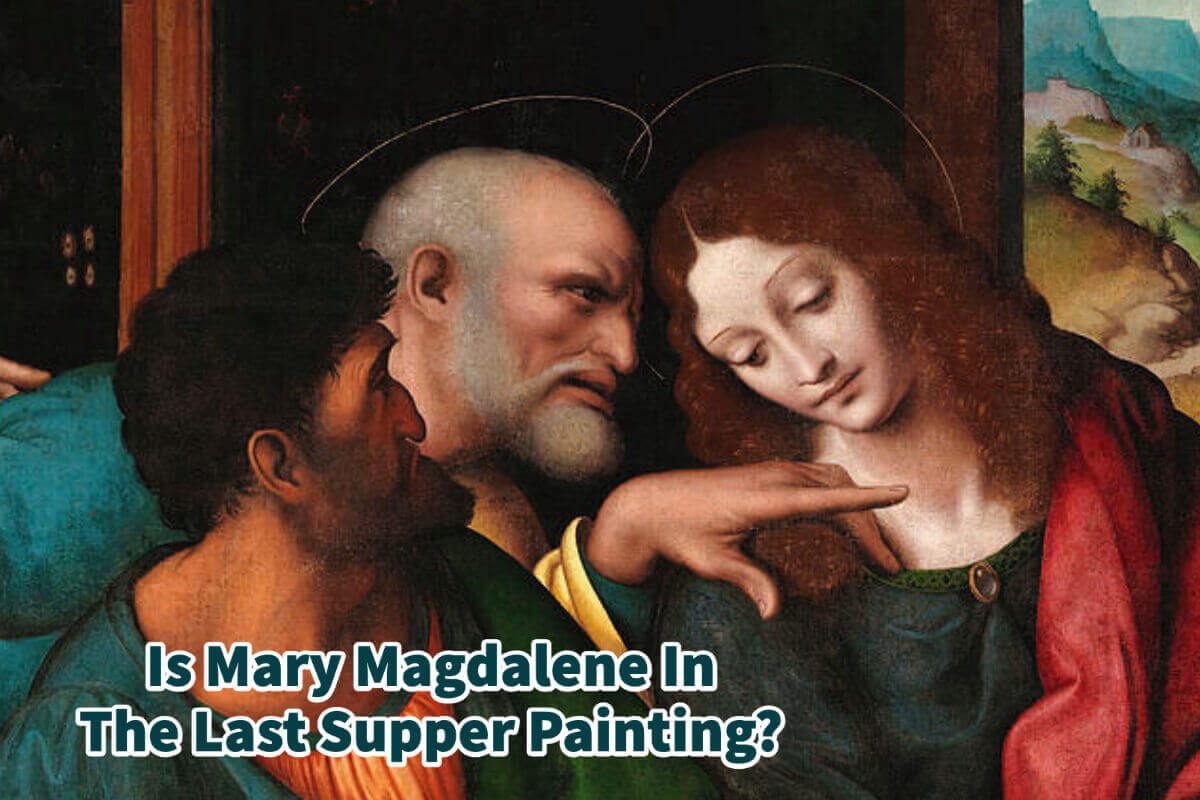Leonardo da Vinci’s artistry immortalized the historic moment when Jesus Christ gathered with his apostles for their fateful final meal. The painting of this event, known as “The Last Supper,” is one of Leonardo’s most renowned masterpieces.
Leonardo Da Vinci’s revered work of art, The Last Supper (1495 – 1498), has fascinated viewers for centuries with its depiction of Jesus surrounded by the 12 apostles at his final meal before the crucifixion. Though speculation abounds whether Mary Magdalene was present amongst them, no female figures can be found in this renowned mural inside Milan’s Santa Maria Delle Grazie monastery – a must-see destination for any admirer of fine Italian artistry!
Table of Contents
- Mary Magdalene Is Not In The Last Supper Painting
- About The Last Supper Painting By Leonardo da Vinci
- Folklore Of Jesus’ And Judas’ Faces
- 10 Reasons Why I Adore Leonardo da Vinci’s “The Last Supper”
- Frequently Asked Questions About Leonardo’s Last Supper Painting
- Related Questions
Mary Magdalene Is Not In The Last Supper Painting

Mary Magdalene is not depicted in the Last Supper Painting by Leonardo Da Vinci. The painting only depicts Jesus and the original 12 apostles.
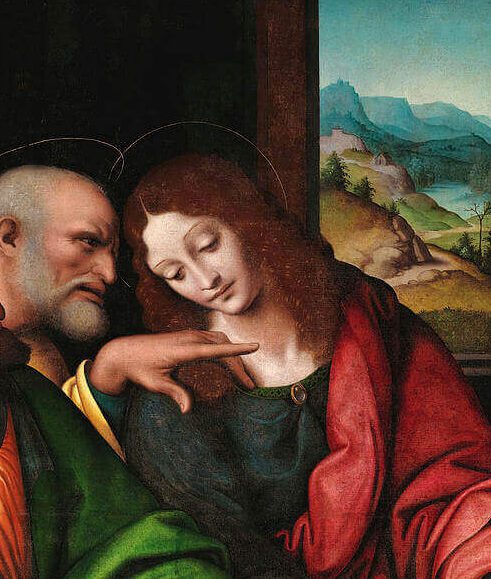
Many people feel that the painting has painting of a woman, Mary Magdalene, but the figure they are referring to is John The Beloved. Women were present at the Last Supper, but none are painted in Leonardo da Vinci’s paintings as the painting is only of Christ and his twelve apostles; there were no women along Jesus’ original 12 apostles.
To add to this confusion, in the Renaissance era, the lines were often blurred between male and female garments. It is possible that Leonardo da Vinci purposely blurred the lines between the apostle John and a woman.
About The Last Supper Painting By Leonardo da Vinci
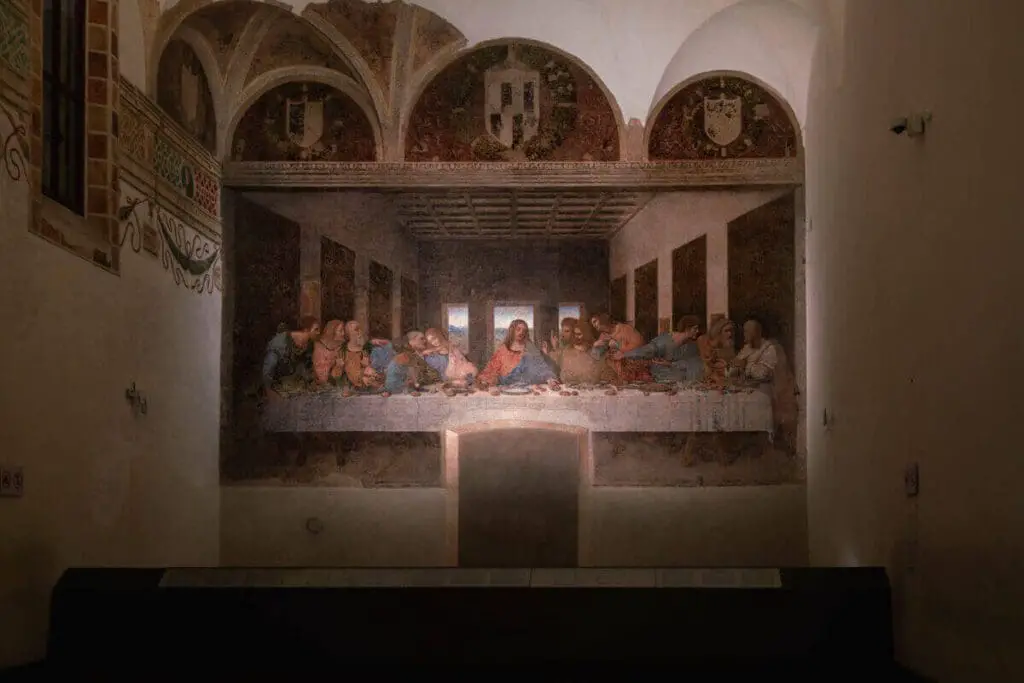
The Last Supper was painted on a plaster wall in the dining hall of Santa Maria delle Grazie, a monastery in Milan, Italy. The painting has undergone extensive restoration over the years and is now located at the refectory of the same monastery.
The Last Supper has become one of the world’s most famous and widely studied works of art, inspiring much debate and speculation regarding its message and the identities of its figures. Although Mary Magdalene is not among them, Jesus’ twelve apostles are present in this iconic painting.
The Last Supper painting is a testament to Leonardo da Vinci’s skill and artistry. the Last Supper has endured for centuries, captivating viewers with its beauty and potent symbolism. The Last Supper is truly a masterpiece with its vivid colors and intricate details.
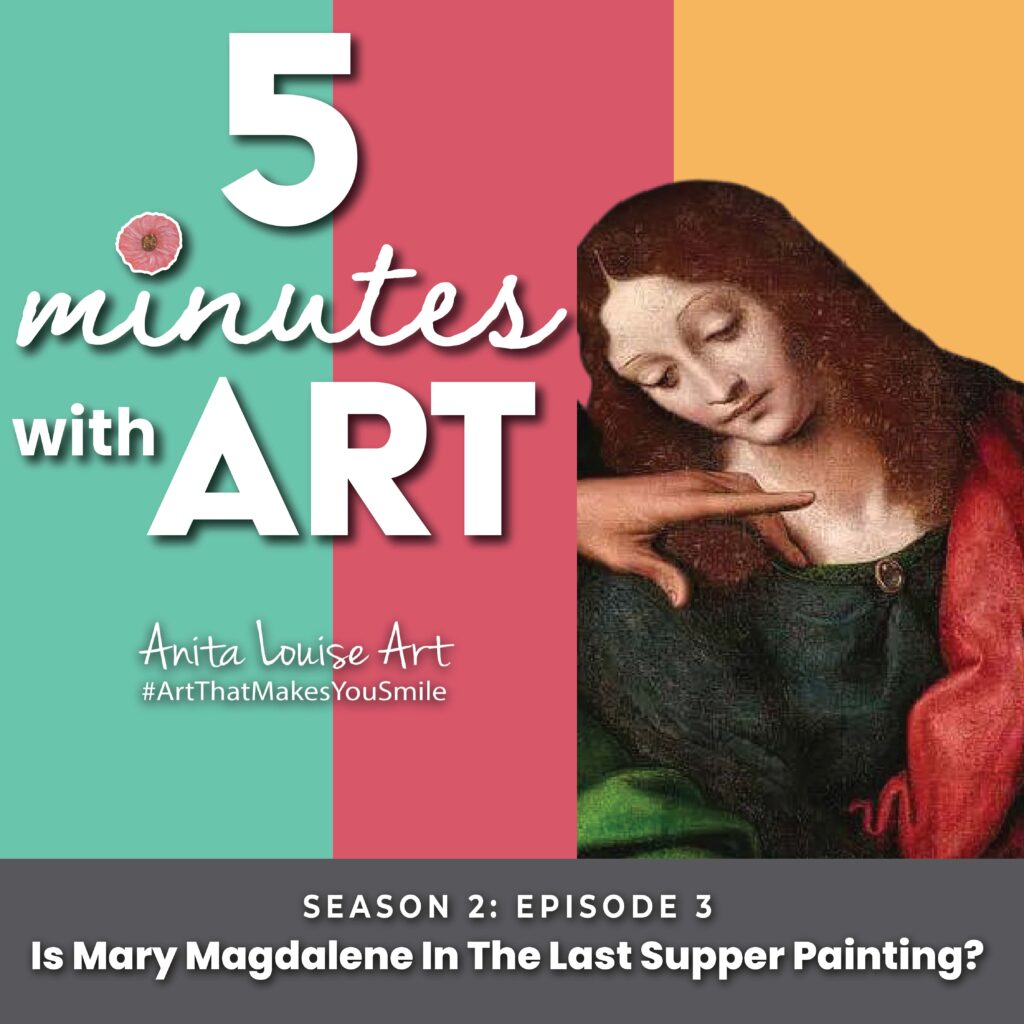
Listen To Our Podcast About Is Mary Magdalene In The Last Supper Painting? by clicking here.
The Last Supper painting by Leonardo da Vinci may not include Mary Magdalene, but it still stands as one of the world’s most famous and influential works of art. With its vivid colors and intricate details, the Last Supper is a remarkable and timeless masterpiece that will continue to captivate viewers for years to come.
The Last Supper painting serves as a reminder of Christ’s Last Supper, a significant event to Christianity, and the impact this artwork by Leonardo da Vinci has had on art and culture throughout history. The Last Supper will continue to be studied, debated, and admired for centuries.
Many visitors visit Santa Maria Delle Grazie in Milan, Italy, every year to see this remarkable painting. It is a testament to the lasting impact that Leonardo da Vinci’s Last Supper has had on art and culture.
Folklore Of Jesus’ And Judas’ Faces
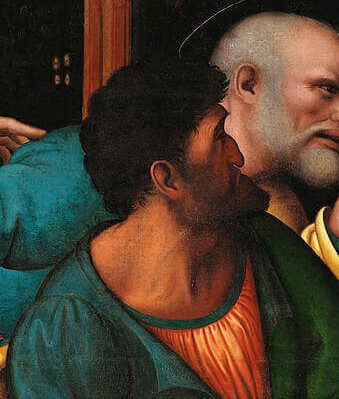
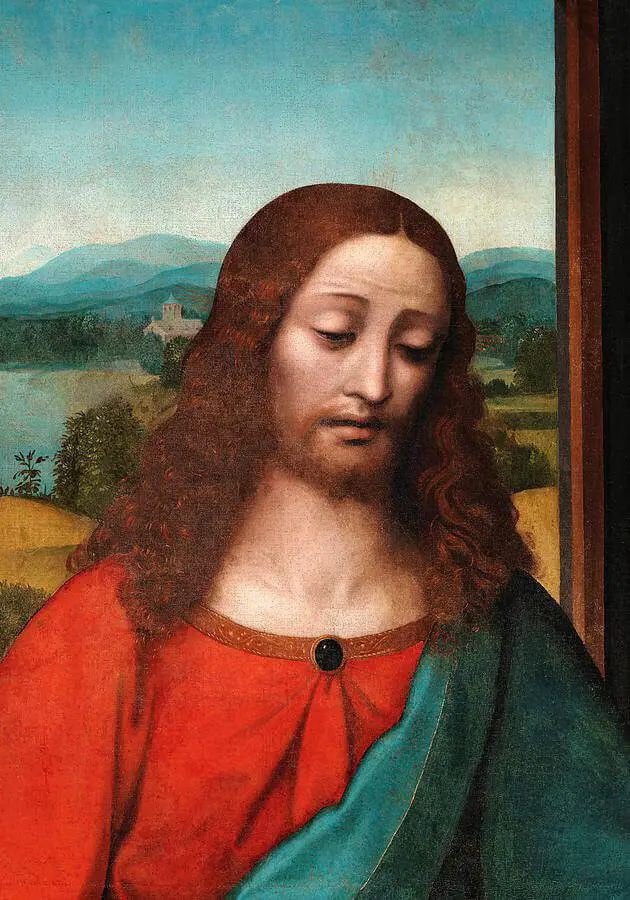
There is a folklore tale about Leonardo da Vinci and the painting of Jesus and Judas/; many feel their faces in the Last Supper painting are similar. As the legend says, Leonardo took great care in finding the models he would use it for each face of the 12 apostles and Jesus.
We do know that Leonardo da Vinci was a notoriously slow painter. And his painting of the Last Supper was no exception.
As with many great painters, some legends and folklore surround their paintings; The Last Supper painting is no exception.
We know that Leonardo da Vinci took quite a long time to pick the exact model and face he wanted for each one of the apostles and Jesus in the Last Supper. He wanted the face he chose to show the personality of the apostles and Jesus.
In the Last Supper, he chose a model with exceptional care for Jesus Christ; Leonardo found a young man who was exactly what he was looking for. He felt like this young man’s face showed the spiritual strength required to pose for Jesus Christ in the Last Supper painting.
Quite a bit of time passed, and the work was almost completed, but he had not yet painted the face of Judas. Leonardo could not find the right face.
Legend says that Leonardo da Vinci went to prison and found the face he was looking for. He saw a man who had committed numerous crimes and would soon be executed.
Leonardo got the man’s execution deterred so that he could model Judas for the Last Supper painting.
The man modeled for Leonardo, and when he had finished painting him, he cried and said, “Don’t you remember me? Not long along, I modeled for you for Christ, but how far I have fallen that now I am Judas!”
The story is probably just folklore, as in reality, the faces do not look that similar, but it is a folklore that has been passed down.
Leonardo spent a long time picking his models for each apostle in the Last Supper and was a notoriously slow painter. He was known to disappear for days when working on the Last Supper, returning to work for a day, and leaving again. That is why it took him about three years to paint the Last Supper.
10 Reasons Why I Adore Leonardo da Vinci’s “The Last Supper”
Leonardo da Vinci’s “The Last Supper” has long held a special place in my heart. This iconic work is more than just a painting to me; it’s a captivating story told through colors, expressions, and meticulous details.
Here are ten reasons why “The Last Supper” is one of my absolute favorites:
- The Pinnacle Moment: Leonardo chose the exact moment to depict when Christ revealed, “One of you will betray me.” This wasn’t a random choice but a moment brimming with tension, shock, and disbelief. The gravity of the situation is palpable, making the scene incredibly powerful.
- Captured Emotion: The range of emotions displayed by the apostles is astounding. From shock to anger to confusion, each apostle’s reaction is a study of human emotion, and I can’t help but be drawn into their world every time I look at it.
- Historical Significance: Leonardo didn’t just paint a supper; he painted one of the most pivotal moments in Christian history. Realizing that he understood this event’s gravitas makes me appreciate the painting even more.
- Masterful Composition: The way Jesus is centered, with the apostles grouped in three clusters on either side, creates a sense of balance and harmony. This arrangement guides my eyes effortlessly across the painting.
- Use of Perspective: Leonardo’s understanding and linear perspective gives the artwork depth and dimension. This technique pulls me into the scene, making me feel like I’m seated at the table.
- Innovative Techniques: Leonardo employed a unique method for this fresco, diverging from traditional techniques of the time. His experimentations and risks tell me of a man ahead of his time.
- Attention to Detail: From the intricate designs on the tablecloth to the individual characteristics of each apostle, Leonardo’s obsession with details resonates with me. It’s a reminder of the dedication and passion he poured into his work.
- Character Representation: Each apostle is distinct, not just in their reactions but also in their appearance. Leonardo’s ability to individualize in a group shows his understanding of humanity.
- The Light and Shadow Play: The way Leonardo played with light and shadow is nothing short of genius. The ethereal light illuminating Jesus, making Him the brightest figure in the room, emphasizes His divine nature.
- Endless Mystery: Whenever I gaze at “The Last Supper,” I find something new—a hidden detail, a subtle expression, a play of color. This element of discovery keeps me coming back and ensures this painting’s position as one of my all-time favorites.
Leonardo da Vinci’s “The Last Supper” is a masterpiece that offers more than meets the eye. Its blend of historical significance, artistic genius, and deep emotion makes it a timeless piece that I will forever hold dear.
Anita Louise Art is dedicated to art education, great artists, and inspiring others to find and create their art. We love art that uplifts and inspires. #ArtToMakeYouSmile! #ArtToMakeYouHappy!
If you are interested in seeing any of my art, you can find out more by clicking here. If you are interested in what inspires me and my paintings, you can discover more by clicking here.
We have a free newsletter and would love you to be part of our community; you can subscribe to the newsletter by clicking here. If you have any questions, I would be happy to talk to you. You can reach me, Anita, by clicking here.
Subscribe to our Anita Louise Art YouTube Channel, filled with great videos and information by clicking here.
Join us for our podcast “5 Minutes With Art.” Spend just 5 minutes a week with us to discover and learn about great art and artists. You can find out more about our podcast by clicking here.
Frequently Asked Questions About Leonardo’s Last Supper Painting
What is Leonardo’s Last Supper painting?
Leonardo’s Last Supper is a mural painting depicting the last meal of Jesus Christ with his disciples, commissioned by Ludovico Sforza for the Dominican monastery Santa Maria delle Grazie in Milan, Italy.
When was Leonardo’s Last Supper painted?
Leonardo’s Last Supper was painted between 1495 and 1498 during the Renaissance period.
What is the size of the Last Supper painting?
The Last Supper painting measures 460 cm × 880 cm (181 in × 346 in).
What materials were used in the Last Supper painting?
Leonardo used tempera on a dry wall rather than the fresco technique for the Last Supper mural.
What is the significance of the Last Supper in Christianity?
The Last Supper is significant in Christianity as it depicts the final meal of Jesus with his disciples before his crucifixion and resurrection.
What is the meaning behind the gestures and expressions of the disciples in the Last Supper painting?
The gestures and expressions of the disciples in the Last Supper painting are believed to represent their reactions to Jesus’ announcement that one of them will betray him.
What is the condition of the Last Supper painting today?
The Last Supper painting has undergone multiple restorations over the years and has suffered significant damage due to humidity, war, and neglect. Today, it is preserved behind a temperature-controlled glass wall.
How has the Last Supper painting influenced art and culture?
The Last Supper painting has influenced art and culture in various ways, from inspiring other artists to creating references in popular culture, such as in Dan Brown’s novel, “The Da Vinci Code.”
Is it possible to see the Last Supper painting in person?
Yes, the Last Supper painting is open to the public, but visitors must book a reservation to limit the number of people in the room and preserve the painting.
Can I take photos of the Last Supper painting?
No, photography is prohibited in the room where the Last Supper painting is located.
Related Questions
How Was Leonardo da Vinci Able To Master So Many Different Professions?
Leonardo da Vinci is known to have had many different titles and professions during his lifetime. He was able to master this profession because he was a genius. But more than just being a genius, Leonardo is self-educating and never stops learning. He had an insatiable amount of curiosity about all kinds of subjects.
By clicking here, you can learn more by reading How Was Leonardo da Vinci Able To Master So Many Different Professions?.
What Can We Learn From Leonardo Da Vinci?
We can learn from Leonardo da Vinci the power of curiosity, especially as an artist. He taught us that we should never stop learning and discovering while at the same time not being afraid to experiment. As a prolific writer, he showed us the power of the written word and learning from nature.
By clicking here, you can learn more by reading What Can We Learn From Leonardo Da Vinci?.
Was Leonardo da Vinci A Philosopher?
Leonardo da Vinci was a philosopher; being a philosopher means that you want to seek wisdom. Leonardo was one person who wanted to seek wisdom or enlightenment in his life. Leonardo was an active observer and learner of the human body, behavior, and nature.
By clicking here, you can learn more by reading Was Leonardo da Vinci A Philosopher?.

